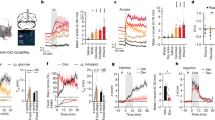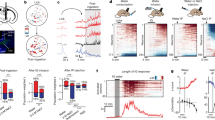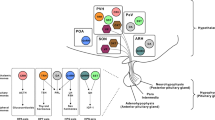Abstract
An anatomically distributed model of energy balance control contrasts with the widely held hypothalamic center model. The distributionist model is recommended by the observations that the caudal brainstem contains critical interoceptive, integrative and neurochemical mediating functions. A prominent example of interoceptive function is sensitivity to the adipose tissue-derived hormone, leptin. To complement the well established focus on hypothalamic leptin receptors (Ob-Rb), we describe an extensive distribution of Ob-Rb in the brainstem. These receptors, moreover, are functionally relevant given the intake suppressive effects of fourth-intracerebroventricular (i.c.v) and brainstem intraparenchymal (in dorsal vagal complex) delivery. A wide variety of intake relevant peptides receptors are found in hypothalamus, but these receptors are also widely distributed in the caudal brainstem. As an example of the functional relevance of these neurochemical mediators, we describe ingestive effects of ligands for melanocortin 3/4 and corticotrophin-releasing hormone receptors obtained with brainstem ventricular and parenchymal (dorsal vagal complex and parabrachial nucleus) delivery. It is clear that responses obtained from hypothalamic treatments can arise independently from stimulation of caudal brainstem receptors. We have used the chronic decerebrate preparation to ask whether the brainstem contains integrative substrates sufficient to mediate behavioral responses to variations in physiological state. The experiments reveal that the brainstem is indeed sufficient for the integration of taste and gastrointestinal signals that co-determine the size of meals in the short term. Decerebrate rats, however, do not respond to food deprivation or to reductions in the number of daily feeding opportunities. These results suggest that the brainstem in neural isolation from forebrain influence is not sufficient for ingestive response to systemic/metabolic signals that affect intake over the long term. The relative contribution of brainstem and forebrain substrates to long-term intake and body weight control in the neurologically intact animal, remains unclear. The data reviewed support a distributed anatomical model of energy balance and recommend increased attention to specific responses (behavioral, autonomic and endocrine) that are mediated by local (brainstem or forebrain) interoceptive and integrative processes, and those requiring bi-directional interactions.
This is a preview of subscription content, access via your institution
Access options
Subscribe to this journal
Receive 12 print issues and online access
$259.00 per year
only $21.58 per issue
Buy this article
- Purchase on Springer Link
- Instant access to full article PDF
Prices may be subject to local taxes which are calculated during checkout
Similar content being viewed by others
Author information
Authors and Affiliations
Corresponding author
Rights and permissions
About this article
Cite this article
Grill, H., Kaplan, J. Interoceptive and integrative contributions of forebrain and brainstem to energy balance control. Int J Obes 25 (Suppl 5), S73–S77 (2001). https://doi.org/10.1038/sj.ijo.0801917
Published:
Issue Date:
DOI: https://doi.org/10.1038/sj.ijo.0801917



